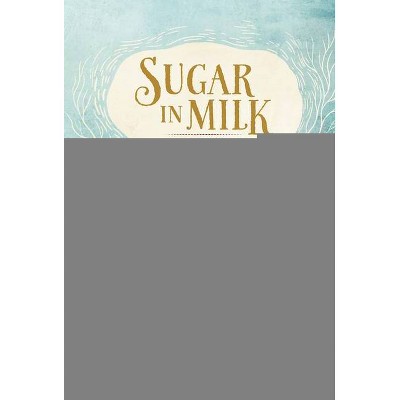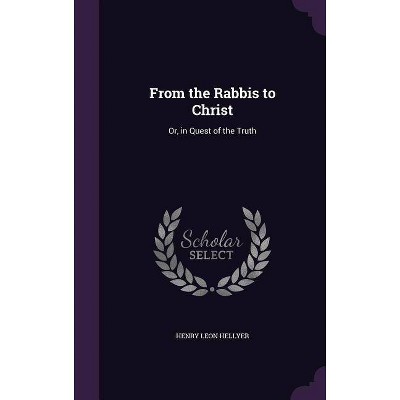Green with Milk and Sugar - by Robert Hellyer (Hardcover)

Similar Products
Products of same category from the store
AllProduct info
<p/><br></br><p><b> About the Book </b></p></br></br>Tracing the trans-Pacific tea trade from the eighteenth century onward, <i>Green with Milk and Sugar</i> shows how the interconnections between Japan and the United States have influenced the daily habits of people in both countries. Robert Hellyer explores the forgotten American penchant for Japanese green tea and how it shaped Japanese tastes.<p/><br></br><p><b> Book Synopsis </b></p></br></br>Today, Americans are some of the world's biggest consumers of black teas; in Japan, green tea, especially <i>sencha</i>, is preferred. These national partialities, Robert Hellyer reveals, are deeply entwined. Tracing the trans-Pacific tea trade from the eighteenth century onward, <i>Green with Milk and Sugar</i> shows how interconnections between Japan and the United States have influenced the daily habits of people in both countries. <p/>Hellyer explores the forgotten American penchant for Japanese green tea and how it shaped Japanese tastes. In the nineteenth century, Americans favored green teas, which were imported from China until Japan developed an export industry centered on the United States. The influx of Japanese imports democratized green tea: Americans of all classes, particularly Midwesterners, made it their daily beverage--which they drank hot, often with milk and sugar. In the 1920s, socioeconomic trends and racial prejudices pushed Americans toward black teas from Ceylon and India. Facing a glut, Japanese merchants aggressively marketed <i>sencha</i> on their home and imperial markets, transforming it into an icon of Japanese culture. <p/>Featuring lively stories of the people involved in the tea trade--including samurai turned tea farmers and Hellyer's own ancestors--<i>Green with Milk and Sugar</i> offers not only a social and commodity history of tea in the United States and Japan but also new insights into how national customs have profound if often hidden international dimensions.<p/><br></br><p><b> Review Quotes </b></p></br></br><br>An unquenchable curiosity--abetted by the author's familial ties--drives this extraordinary story of the Japan-to-America tea trade. Equal parts business and cultural history, with a spoonful of diplomatic history mixed in, <i>Green with Milk and Sugar</i> reveals many surprising as well as previously unexplored effects of international commerce at both ends of the commodity chain. Altogether, a model transnational study.--Leon Fink, author of <i>Undoing the Liberal World Order: Democratic Ambitions and Political Realities Since World War II</i><br><br>Beautifully researched and written, <i>Green with Milk and Sugar </i>demonstrates how important Japan has been to developing U.S. tastes and trade and global capitalism. Hellyer reveals a tremendous amount about consumption and trade in Japan and how Pacific influences can be found throughout the American continent. This book will appeal to tea lovers, historians, food scholars, and members of the tea trade.--Erika Rappaport, author of <i>A Thirst for Empire: How Tea Shaped the Modern World</i><br><br>Delightfully rich in eye-opening revelations, <i>Green with Milk and Sugar</i> spotlights aspects of the modern history of tea found in no other books on this global drink. It offers a fine example of how the study of the forgotten past can alter our perception of present tastes and places.--Shigehisa Kuriyama, author of <i>The Expressiveness of the Body and the Divergence of Greek and Chinese Medicine</i><br><br>Robert Hellyer's book is a gem--an intriguing story that connects the United States and Japan through 'teaways.' It offers a fascinating entangled, trans-Pacific history of the production and consumption of Japanese green tea through the lens of intergenerational family stories, spanning over one hundred years.--Naoko Shimazu, author of <i>Japanese Society at War: Death, Memory, and the Russo-Japanese War</i><br><br>Who would have guessed that the American heartland had a penchant for green tea (served with milk and sugar) before World War II and that U.S. tea drinkers contributed to the ubiquity of <i>sencha</i> in modern Japan? This engagingly written, delightfully illustrated, and stimulating book brings a lost world of 'teaways' to light.--Kristin Hoganson, author of <i>The Heartland: An American History</i><br><p/><br></br><p><b> About the Author </b></p></br></br>Robert Hellyer is associate professor of history at Wake Forest University. He is the author of <i>Defining Engagement: Japan and Global Contexts, 1640-1868</i> (2009) and coeditor of <i>The Meiji Restoration: Japan as a Global Nation</i> (2020).
Price History
Price Archive shows prices from various stores, lets you see history and find the cheapest. There is no actual sale on the website. For all support, inquiry and suggestion messages communication@pricearchive.us




















